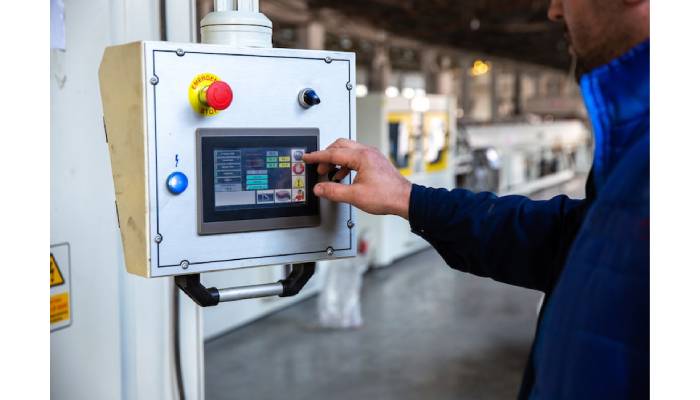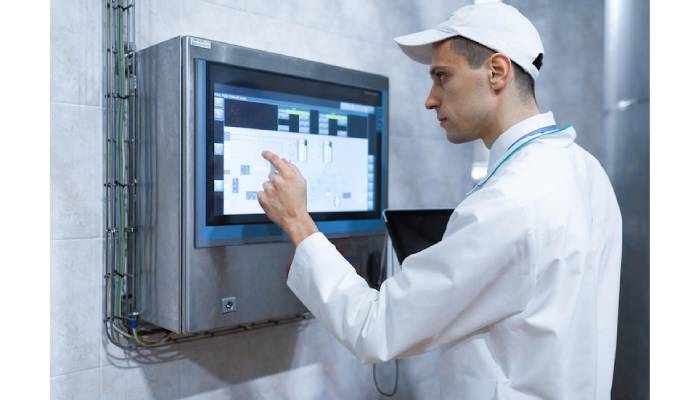In today’s fast-paced and energy-conscious world, the need for efficiency in every aspect of building operations is paramount. A chiller energy monitoring system stands as a critical tool in this endeavor, especially within the scope of modern HVAC management. These systems are designed to track and analyze the energy consumption of chillers in real time, offering precise and actionable data on how efficiently these critical pieces of equipment operate. With this information at their disposal, facility managers can identify inefficiencies in the system, make data-driven decisions, and optimize overall operations. One of the most significant advantages of using a cutting-edge monitoring system is its ability to predict potential issues before they become severe, thereby reducing the risk of costly downtime and maintaining the system’s performance at its peak. By shifting from reactive to proactive management, organizations can not only improve their chiller operations but also extend the life of the equipment, which translates to long-term savings. Additionally, optimizing efficiency is not just about reducing costs; it’s also about aligning with broader sustainability goals. In a world where environmental responsibility is increasingly important, implementing a chiller energy monitoring system can help organizations meet these goals, making it a crucial investment for any forward-thinking facility.
How A Chiller Energy Monitoring System Can Reduce Operational Costs?
Operational costs are a significant concern for any facility, particularly when it comes to the energy-intensive operation of HVAC systems. Chillers, often the most substantial energy consumers within these systems, present a considerable opportunity for cost savings. A Chiller energy monitoring system can play a pivotal role in reducing these operational costs by providing detailed insights into the energy usage patterns of the system. By continuously monitoring and analyzing data from the chillers, the system identifies when and where energy is being wasted—whether during off-peak hours or due to inefficient operation of the chillers. This real-time information enables facility managers to make informed adjustments that reduce unnecessary energy consumption, leading to substantial savings on energy bills. Furthermore, the system’s ability to predict maintenance needs before failures occur can drastically reduce repair costs. By addressing potential issues proactively, the system helps avoid expensive emergency repairs and prevents downtime that could disrupt operations. In this way, a chiller energy monitoring system becomes a vital tool not only for managing energy consumption but also for controlling and reducing overall operational costs, making it an indispensable asset for any facility looking to enhance its financial performance.
Enhance Cooling Performance Using A Chiller Energy Monitoring System
The performance of cooling systems is crucial in maintaining a comfortable and productive environment within any facility. Ensuring that chillers operate at peak efficiency is not just a matter of comfort but also of operational efficiency. A chiller energy monitoring system enhances cooling performance by providing continuous, real-time data on critical aspects such as temperature fluctuations, cooling loads, and the overall efficiency of the chillers. This constant stream of data allows facility managers to make immediate adjustments as necessary, ensuring that the system responds dynamically to changing conditions. For example, during periods of high cooling demand, the system can optimize the operation of chillers to meet these needs without overloading the equipment. Conversely, during times of low demand, the system can scale back operations to conserve energy without compromising the cooling performance. This fine-tuning ensures that the chillers operate efficiently, providing consistent cooling and maintaining optimal comfort levels throughout the facility. Additionally, by preventing unnecessary wear and tear on the equipment, the monitoring system helps extend the lifespan of the chillers, ensuring that they continue to perform effectively over the long term. In sum, a chiller energy monitoring system is a key tool in enhancing the cooling performance of a facility, ensuring both comfort and efficiency.
Maximize Energy Savings With An Advanced Chiller Energy Monitoring System
Maximizing energy savings is a priority for many organizations, driven not only by the desire to reduce costs but also by the need to meet stringent sustainability targets. An advanced chiller energy monitoring system is specifically designed to help facilities achieve these goals by providing detailed and actionable insights into how and when energy is used. By continuously tracking energy consumption, the system can compare current usage against historical data and industry benchmarks, thereby identifying areas where efficiency can be improved. For instance, the system might reveal that certain chillers are consuming more energy than necessary during specific times of the day, prompting facility managers to reevaluate their scheduling or load distribution strategies. Furthermore, the chiller energy monitoring system can be integrated with other building management systems, such as lighting, heating, and ventilation, to create a more holistic approach to energy savings. This integration allows for coordinated adjustments across all systems, leading to even greater overall energy efficiency. The result of these efforts is not only lower energy bills but also a reduced environmental footprint, which is increasingly important in today’s regulatory and consumer landscape. In this way, an advanced chiller energy monitoring system becomes an essential tool for any energy-conscious organization, helping to maximize energy savings and contribute to broader sustainability efforts.
Revolutionize Cooling Management With A Chiller Energy Monitoring System
The management of cooling systems in large facilities has traditionally been a reactive process, with maintenance and adjustments made only after problems have been detected. However, this approach is rapidly changing, thanks in large part to the advent of chiller energy monitoring systems. These systems are revolutionizing cooling management by transforming raw data into actionable insights, enabling facility managers to shift from traditional, reactive maintenance to a more predictive and proactive management strategy. With real-time data at their fingertips, managers can quickly identify inefficiencies, optimize chiller performance, and prevent potential failures before they occur. This proactive approach not only enhances the reliability and efficiency of the cooling system but also extends the lifespan of the equipment, thereby reducing the need for costly replacements. Additionally, by providing a detailed understanding of how various factors—such as weather conditions, occupancy levels, and time of day—affect cooling requirements, the system allows for more precise control over the entire HVAC operation. This level of control leads to significant improvements in both energy efficiency and indoor comfort, making chiller energy monitoring systems a game-changer in the field of cooling management. As facilities increasingly adopt these advanced systems, the overall approach to cooling management is poised to become more efficient, reliable, and cost-effective.
Top Benefits Of Implementing A Chiller Energy Monitoring System
The implementation of a chiller energy monitoring system offers a wide range of benefits that are critical to the successful operation of any facility. One of the most significant advantages is the real-time visibility it provides into the performance and energy consumption of chillers. This visibility enables facility managers to make informed decisions that enhance efficiency and reduce costs. By continuously monitoring key parameters such as temperature, pressure, and energy usage, the system helps identify inefficiencies and potential issues before they escalate into costly problems. Additionally, modern monitoring systems come equipped with predictive analytics capabilities that allow for proactive maintenance, minimizing the risk of unexpected breakdowns and extending the lifespan of the equipment. Another important benefit is the system’s ability to integrate with other building management systems, which creates a more coordinated and efficient operation across the entire facility. This integration leads to greater overall energy savings and improved operational performance. Furthermore, the data collected by the monitoring system can be used to generate detailed reports on energy consumption and efficiency, which can help organizations meet regulatory requirements and achieve their sustainability goals. In summary, the benefits of implementing a chiller energy monitoring system are vast, encompassing operational, financial, and environmental advantages that make it an essential tool for any facility.
Real-Time Insights: The Power Of A Chiller Energy Monitoring System
Real-time insights are one of the most powerful features of a chiller energy monitoring system, providing up-to-the-minute data on chiller performance and energy consumption. This capability empowers facility managers to make immediate adjustments that optimize efficiency and prevent potential issues before they escalate. The ability to see exactly how chillers are operating at any given moment allows for dynamic responses to changing conditions, such as fluctuations in cooling demand or unexpected equipment malfunctions. For instance, if a chiller begins to operate outside of its optimal parameters, the system can alert the facility manager, who can then take corrective action before the issue leads to more significant problems. Moreover, this real-time data also enables more precise scheduling of maintenance activities, ensuring that chillers are serviced before problems arise, rather than after they have caused downtime or damage. The continuous monitoring provided by the system creates a valuable historical record that can be analyzed to identify long-term trends and opportunities for further optimization. In an environment where energy efficiency and reliability are critical, the real-time insights offered by a chiller energy monitoring system are invaluable tools for maintaining peak performance and ensuring the long-term success of HVAC operations.
Conclusion
A chiller energy monitoring system is a vital investment for any facility that seeks to optimize its HVAC operations. These systems offer a comprehensive suite of benefits that include improved efficiency, reduced operational costs, enhanced cooling performance, and maximized energy savings. By revolutionizing cooling management and providing real-time insights, chiller energy monitoring systems not only ensure the reliable and efficient operation of chillers but also support broader sustainability goals and regulatory compliance. Implementing such a system represents a proactive step toward a more efficient, cost-effective, and environmentally friendly HVAC operation. As energy costs continue to rise and sustainability becomes an ever more pressing concern, the importance of a chiller energy monitoring system will only increase, making it a crucial component of any modern facility management strategy. By embracing this technology, organizations can position themselves at the forefront of energy efficiency and operational excellence, ensuring their long-term success in an increasingly competitive and resource-conscious world.


